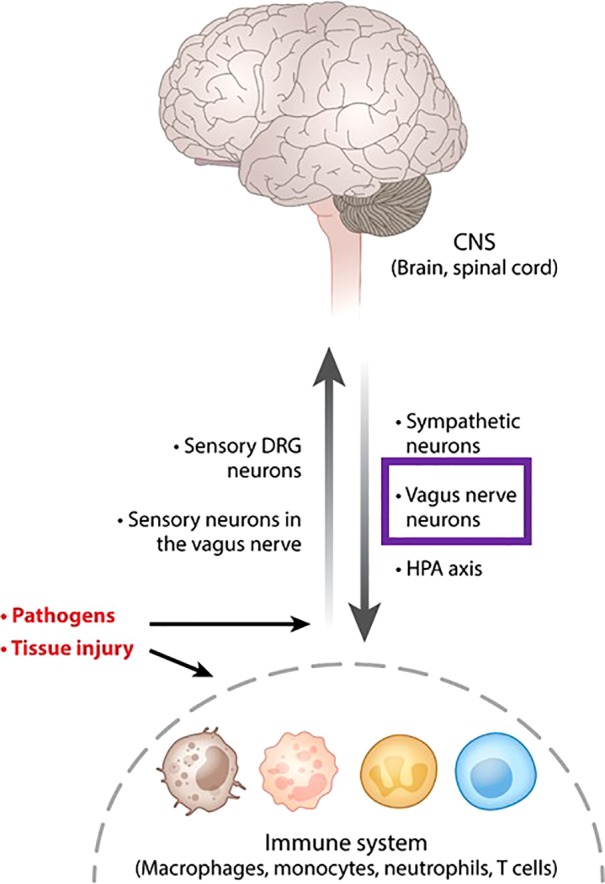Fig. 1.

Communication between the central nervous system (CNS) and the immune system. The nervous system and the immune system communicate in response to pathogen invasion, tissue injury, and other homeostatic threats. Macrophages, neutrophils, monocytes, T lymphocytes, and other immune cells detect the presence of pathogen components and tissue injury molecules and release cytokines and other signaling molecules. These alterations in peripheral immune homeostasis are detected by sensory neurons residing in the dorsal root ganglia (DRG) and vagus nerve afferent neurons, which signal to the spinal cord and the brain. Pathogens also directly activate afferent neurons. These signals are integrated in the central nervous system with descending signaling via sympathetic and efferent vagus nerve fibers (purple box) with the release of catecholamines and ACh, respectively. These neurotransmitters interact with immune cells and control immune cell function and responses. Other neurotransmitters released from neurons also play a role in immune control. The hypothalamic-pituitary-adrenal (HPA) axis with the release of corticosteroids also provides a conduit of brain-to immune regulation (the use of this figure originally published in Ref. 43 has been granted by Annual Review of Immunology).
